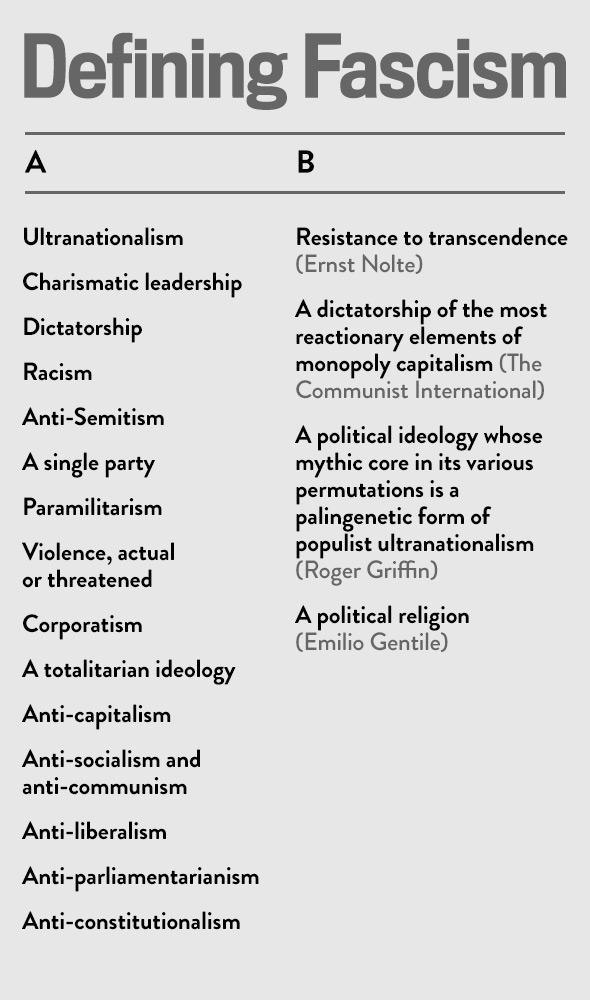Fascism
OVERVIEW
Fascism is . . .

Roger Griffin (2004)
The broad area of scholarly consensus which now exists, admittedly one with highly fuzzy boundaries, is that:
fascism is best approached as a genuinely revolutionary, trans-class form of anti-liberal, and in the last analysis, anticonservative nationalism. As such it is an ideology deeply bound up with modernization and modernity, one which has assumed a considerable variety of external forms to adapt itself to the particular historical and national context in which it appears, and has drawn on a wide range of cultural and intellectual currents, both left and right, anti-modern and pro-modern, to articulate itself as a body of ideas, slogans, and doctrine. In the inter-war period it manifested itself primarily in the form of an elite-led ‘armed party’ which attempted, mostly unsuccessfully, to generate a populist mass movement through a liturgical style of politics and a programme of radical policies which promised to overcome the threat posed by international socialism, to end the degeneration affecting the nation under liberalism, and to bring about a radical renewal of its social, political and cultural life as part of what was widely imagined to be the new era being inaugurated in Western civilization. The core mobilizing myth of fascism which conditions its ideology, propaganda, style of politics, and actions is the vision of the nation’s imminent rebirth from decadence.
— “The Palingenetic Core of Fascist Ideology”
Robert O. Paxton
In The Anatomy of Fascism (2004) Paxton writes:
Fascism may be defined as a form of political behavior marked by obsessive preoccupation with community decline, humiliation, or victimhood and by compensatory cults of unity, energy, and purity, in which a mass-based party of committed nationalist militants, working in uneasy but effective collaboration with traditional elites, abandons democratic liberties and pursues with redemptive violence and without ethical or legal restraints goals of internal cleansing and external expansion.
He also lists key ideas or “mobilizing passions” that often animate fascist moments:
- a sense of overwhelming crisis beyond the reach of any traditional solutions;
- the primacy of the group, toward which one has duties superior to every right, whether individual or universal, and the subordination of the individual to it;
- the belief that one’s group is a victim, a sentiment that justifies any action, without legal or moral limits, against its enemies, both internal and external;
- dread of the group’s decline under the corrosive effects of individualistic liberalism, class conflict, and alien influences;
- the need for closer integration of a purer community, by consent if possible, or by exclusionary violence if necessary;
- the need for authority by natural chiefs (always male), culminating in a national chieftain who alone is capable of incarnating the group’s historical destiny;
- the superiority of the leader’s instincts over abstract and universal reason;
- the beauty of violence and the efficacy of will, when they are devoted to the group’s success; [219]
- the right of the chosen people to dominate others without restraint from any kind of human or divine law, right being decided by the sole criterion of the group’s prowess within a Darwinian struggle.


Leave A Comment